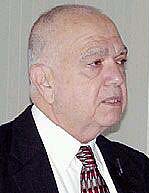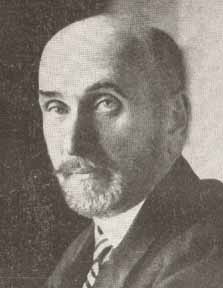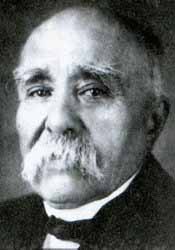|
|
Richard G. Hovannisian gives a
good account in his 1967 book, 'Armenia on the Road to Independence,' on
how "the Armenians were dupes and pawns in the game of international
politics." It was all of the Allies who used the Armenians, but in
these excerpts the focus is on how big Orthodox brother, Russia, used them.
Can the Armenians blame the
Russians? For such a clever people, it is not as if the Armenians were without
signs regarding how untrustworthy the Russians were... the reason why William Saroyan pointed out the real enemy
of the Armenians was not the Turks, but the Russians. Since the times of
Peter the Great, the Russians made promises to the Armenians that they rarely
kept.
It was Peter the
Great who encouraged the Armenians to found colonies in Russia. He
desired to develop the trade of his country and recognized the rare
commercial attributes of the Armenians. Catherine II pursued the same
policy, and the Armenians of the Crimea, tired of the oppression of the
Tatar Khans, founded, on the banks of the Don, the city of Novo-Nakhtchevan.
They entered the Russian armies and gave proof of those military talents
which had distinguished them during the days of the Byzantine Empire.
Kevork Aslan ("Armenia and
the Armenians: From the Earliest Times Until the Great War [1914],"
1920, MacMillan Co., NY, p. 114; Translated from the French by Pierre
Crabitès) gave an idea of the background of the famous czar and
czarina's beckoning of the Armenians, but the Armenian historian was not
being completely sincere. The main reason why the Russians wooed the
Armenians was to build up a dependable "Christian" community,
for use in their Turk-smashing plans. The idea was to kick the Muslims
out and to put the Christians in. Seduced by promises of free goodies
the Armenians could not resist, it was an easy step for the Armenians to
keep betraying their Ottoman nation where they had prospered for many
centuries. Aslan gets more to the point of the matter by pointing to the
entrance of the Ottoman Armenians into the Russian military.
|
It didn't matter to the Armenians
how often the Russians kept breaking their promises. The Armenians were
willing to betray their Ottoman nation time and again, since the end of the
18th century. This, in spite of their prosperity; as Hovannisian indicated
earlier in this work (pg. 25):
Though some
Christians surmounted the inferior status by converting to Islam, most
Armenians held tenaciously to their native dialects and religion — the
ability of the Armenians to maintain their national identity throughout
centuries of Turkish domination can be attributed in part to the
administrative structure of the Empire. When Mehmed II made Constantinople the
Ottoman capital in 1453, the Turkic Moslem element formed a minority in many
areas of his domains. The Sultan reduced his administrative problems by
according INTERNAL AUTONOMY (emphasis
Holdwater's) to the non-Moslem communities. In
return, the religious superior of each group was responsible for maintaining
order among his people and for collecting the required community levies. The
Armenian bishop of Brusa was invited to Constantinople in 1461 and elevated to
the rank of Patriarch of all non-Orthodox Christians. His community, the
Armenian Ermeni Millet, and the Greek Orthodox and Jewish millets became the
three official non-Moslem establishments within the framework of the Empire.
[Footnote: Archbishop Maghakin Ormanian, Azgapatum (National History), Vol. II
(Constantinople 1914) & Vol. III (Jerusalem, 1927).] The millet system
proved workable and beneficial for the Armenians.
PRE-OTTOMAN DAYS: NO
AUTONOMY
"...[Byzantine
E]xpansionist policies had their crowning glory in
Armenia....Constantine IX. Monomachus was a ruthless Orthodox zealot. He
annexed 'heretical' Ani and made it part of the Orthodox Byzantine
Empire. The Armenian version reads, 'King Gagik II. is forced to
surrender the Kingdom in Constantinople.' That was in 1045, another
fateful year for the Armenians. Since 1045, there has never been an
independent or semi-independent principality or kingdom in eastern
Anatolia, the historical region of Armenia. There has been no trace
of Armenian self-government or autonomy."
Erich Feigl, "The Myth of
Terror," Austria, 1986, p. 42-3
|
The Ottoman Empire was no utopia
and Armenians faced injustices from time to time, as did all other Ottoman
citizens, including Turkish ones; even with its imperfections, the regime came
closest to Plato's Republic, according to Wellington House propagandist Arnold
Toynbee himself. Imagine the luxury of a subject people being afforded an
autonomy, during medieval times, when most multi-cultural empires throughout
the world were known for their cruelty and injustice. The Armenians were
allowed to prosper ("For the Armenians, this was
the beginning of a golden age... the domain for their activities as traders
and craftsmen grew until it was a hundred times the size of their original
district in eastern Anatolia" Feigl, "The Myth of Terror,"
p. 44), to the extent of being better off than the average Turk. Yet,
Ottoman kindness was rewarded by Armenian treachery. The masses threw their
lot in with their greedy and fanatical leaders, who actually encouraged their
own to get massacred, so that the European powers would intervene. As Kerope
Papazian wrote in Patriotism
Perverted, referring to the outbreak of WWI, the Dashnak leaders
"were swayed in their actions by the interests of the Russian government
and disregarded, entirely, the political dangers that the war had created for
the Armenians in Turkey. Prudence was thrown to the winds."
We begin with the excerpts from
the book:
|
|
|
| Revelation of Actual Tsarist Attitudes (pp. 57-58) |
 |
|
Prof.
Hovannissian |
While the Russian armies occupied most of the
Armenian Plateau during the winter and spring of 1916, Armenian leaders were most
apprehensive. Apparent respect of tsarist officials for Armenian political-civic bodies
and volunteer groups had changed into expressions of sarcasm and distrust. As early as the
first half of 1915, disquieting reports from Russian junior officers, accusing the
volunteers of lawlessness and looting, had reached Tiflis. Publication of such dispatches
elicited sharp protests to Vorontsov-Dashkov from the Armenian National Bureau.
Subsequently, the Viceroy informed members of the Bureau that an investigation had proved
the detrimental news unfounded, and he promised to publicize this report. That he did not
was significant.90 The National Bureau also complained that in the
occupied territories the Kurds, instead of being disarmed, were allowed freedom of action.
While these "enemies of yesterday" continued their violations against the
sedentary population, tsarist officials confiscated the weapons of the Armenian peasantry.
A deputation composed of Bishop Mesrop, Mayor Khatisian, and Samson Harutunian requested
that Vorontsov-Dashkov authorize the Armenian refugees to carry arms for protection and to
settle in deserted Moslem villages.91 Though the Viceroy reassured
the delegation of the government’s benevolence, Armenian leaders could not ignore the
ascendance of traditional bureaucratic views toward the minorities. What the National
Bureau did not know was that representatives of the Romanov sovereign were earnestly
negotiating the partition of Turkey with the other members of the Entente. Moreover,
Russian designs to annex the eastern vilayets included no provisions for Armenian
autonomy.92
|
You heard it from Prof.
Hovannisian: NO PROVISIONS FOR ARMENIAN AUTONOMY. After the professor reported the Armenians had autonomy for centuries, in the Ottoman
Empire.
|
Correspondence of ranking tsarist officials was
indicative of the Russian retrenchment. In April, 1915, before the Van offensive,
General N. N. ludenich, Field Commander of the Caucasus Army, reported to
Vorontsov-Dashkov about the Alashkert Plain and Bayazit Valley:
The Armenians intend to have
their refugees occupy the lands abandoned by the Kurds and Turks in order to benefit
from that territory. I consider this intention unacceptable, for the reason that
after the war, it will be difficult to reclaim those lands seized by the Armenians
or to prove that the property does not belong to them, as was the case after the
Russo-Turkish War [of 1877-1878]. I consider it very desirable to populate the
border regions with a Russian element. . .
It has already pleased Your
Excellency to affirm my recommendation for the immediate expulsion, to beyond the
Turkish lines, of all those Kurds of the Alashkert, Diadin, and Bayazit valleys who
have shown us any kind of resistance, and in the future, when these valleys enter
within the bounds of the Russian Empire, to populate them with colonists from the
Kuban and Don and in that way to form a Cossack region along the border.93
 |
|
Sergei
Dmitrievich Sazonov
Russian Foreign Minister (1910-16) |
A memorandum in a similar vein was relayed to
Foreign Minister Sazonov in March, 1915, by Minister of Agriculture A. V.
Krivoshein:
The success of our military
activities on the Turkish front gives reason to think that, more or less, in the
near future, we will have the opportunity to rectify our Caucasian boundary and to
round out our possession of Asia Minor and Armenia.
After considering the agricultural prospects of
the Black Sea coastal area, he continued:
. . .the other region, which falls
southeast of the former, is the basin of the upper currents of the Araxes and
Euphrates, which is generally called Armenia (Erzerum and Van vilayets as well as
part of Bitlis vilayet). This region is mostly high above sea level and is
completely suitable for Russian colonists.94
Wartime documents published by the Bolshevik
government cast a good deal of light upon the foreign policy fostered by Nicholas II
and his ministers. That the Armenians were dupes and pawns in the game of
international politics is glaringly exposed in these records.95
An exchange of notes between Sazonov and A. P. Izvolskii, ambassador to France,
touches on a special mission of Hakob Zavriev. After the outbreak of war, the
Armenian politician had conferred with the Russian Foreign Minister and, having
received certain assurances, departed for Paris to gain the blessings of the French
government for an autonomous Armenia. On May 17, 1915, Izvolskii informed Sazonov:
Dr. Zavriev, who has come
here, has presented a memorandum to me about the results of his talks in our
Ministry of Foreign Affairs. In this note, among other things, it is said that
Russia intends to propose to the governments that within the Turkish boundaries
there be created an autonomous Armenia, under Turkish suzerainty and the protection
of the three governments, Russia, England, and France. Supposedly, Armenia’s lands
are to encompass not only all of the Armenian provinces, except for a few border
districts, but also Cilicia with a seaport on the Mediterranean Sea, at Mersin. . .
. The point in relation to Cilicia is, I feel, especially delicate, because France
has already expressed to us her ambitions concerning the area.96
On the following day, Sazonov replied,
"Our talks with the Armenians have had a completely academic character." 97
|
| Pp. 67-68 |
The Russian I Corps, including the First Armenian Rifle Battalion,
advanced over Mamakhatun into Erzinjan on July 24 and occupied the western areas of the
Armenian Plateau and the strategic crossroad between Erzerum and Sivas (Sebastia).124
Only after the rout of Vehib’s Army did Izzet Pasha attack the
Russian positions along the Kighi-Ognot-Mush line. During August the Second Army’s II,
III, IV, and XVI 125 corps attained their initial objectives, but
then they too were stalled and repelled. Enver’s strategy had failed; he was spared
further losses only by a Russian halt owing to the early snows of the 1916-1917 winter
season.126 Grand Duke Nicholas and General ludenich, encouraged by
successes on the Turkish front, planned for a spring offensive over Kharput, Sivas, and
along the Black Sea coast toward Constantinople to force the Ottomans to capitulate. Such
an eventuality in 1917 would not have been unlikely were it not for the March Revolution
in Russia.
 |
|
French
Premier Clemenceau |
As the two opposing armies dug in for the winter, Turcophobe
agitation by Armenians in America and Europe swelled. Many men already had departed for
the Caucasus to enlist as volunteers, while in November, 1916, a new outlet for the
revenge-hungry Armenians was provided by the French government. Negotiations of Boghos
Nubar with French political and military authorities culminated in the formation of the
Légion d’Orient, an auxiliary force made up of Armenians and Syrians of Ottoman origin.
Ninety-five percent Armenian in composition, the Légion included refugees, former
prisoners of war, and permanent residents of Egypt, America, and Europe. Under the command
of General Edmund Allenby, the Légion, fighting in Palestine, Syria, and finally Cilicia,
won the plaudits of Clemenceau’s government and its Entente allies. The légionnaires,
like the volunteers in Transcaucasia, considered both the official declarations about
Armenian indemnification and the bestowal of medals and certificates of valor equivalent
to bona fide Allied commitments. Ironically, the Entente already had confirmed the secret
agreements that partitioned the Armenian Plateau, Cilicia, and much more of Asiatic Turkey
among themselves.127
In light of the guarded negotiations of the Allies during 1915-1916,
the change of the official Russian disposition toward the Armenians, their volunteer
units, and their political aspirations is more comprehensible, and the tsarist decree
concerning the government of Turkish Armenia is especially significant. Signed in June,
1916, by Chief of Staff General M. V. Alekseev, the "Rules for the Temporary
Administration of Areas of Turkey Occupied by the Right of War" transformed the
eastern provinces of the Ottoman Empire into a military governor-generalship for the
purpose of maintaining order and assisting the war effort. The governor-general, his chief
assistants, and the administrators of the various territorial subdivisions were all to be
officers of rank, while minor regional posts might be filled by civilians of rank. Use of
confiscated enemy goods and lands, which were at the disposal of the governor-general, was
reserved solely for the military forces. "Armenia" or "Armenian" were
terms not found in the decree, which was worded so that it might apply to any territory
occupied in time of war.128 In place of the autonomy envisaged by
the Armenians, the eighth article of the "Rules" instructed the officials of the
governor-generalship
to reestablish and uphold law and order, to
protect the life, honor, property, religious-civil liberties of the inhabitants, to
consider all nationalities equal before the Russian government, and to guarantee these
inhabitants the possibility of free and tranquil labor, on condition that they submit in
toto to the suzerainty of Russia.129
Appointed governor-general in the summer of 1916, General Peshkov
began preparations for the direct and unconditional annexation of the Armenian Plateau to
the vast Romanov Empire.130
|
Renewed
Russian Armenian Activity
|
The year 1916 was a black one for the Russian
Armenians. The full extent of the blow that had struck from Constantinople to Bitlis
was only then clearly comprehended. Russian occupation of Erzerum and Trebizond
would have elicited delirious celebrations throughout Transcaucasia in 1914, but in
1916 it was greeted with silent interest, for the tsarist armies had occupied
"Armenia without Armenians," the ideal not only of Enver and Talaat but
also of the former Russian Foreign Minister, Lobanov-Rostovskii. With
the tsarist order to disband the volunteer units, the Russian Armenians entered
a period of shock, disillusionment, and dismay. It was the plight of the refugees
which jolted them back into action. By the end of 1916, nearly three hundred
thousand Ottoman Armenians had sought safety in Transcaucasia, where nearly half
were destined to die from famine and disease.131 The revitalized National Bureau, philanthropic societies, and
populace attempted to mitigate the suffering of the Turkish Armenian survivors by
contributing over 5 million rubles for relief activities. Armenians from every
corner of the Russian Empire participated in this newest of "all-national”
efforts."132
|
| |
After several delays and obstacles, the Russian
government, in May, 1916, authorized Armenian leaders to convene in Petrograd on the
condition that the agenda include only relief measures. Joining the delegates from
the influential Armenian communities of Moscow and Petrograd were representatives
from Transcaucasia, South Russia, and the United States, as well as spokesmen for
the refugees from Turkey. The spectrum was broad, for among the more than a hundred
delegates were the two Armenian members of the Russian State Duma, both
Constitutional Democrats; ranking Dashnakists, Social Democrats, and Social
Revolutionaries;133 several eminent scholars; and
representatives of numerous philanthropic, social, cultural, and religious
organizations. Officials of the Russian bureaucracy were also in attendance so that
forbidden topics might not be broached. Though the tangible results of the
deliberations were negligible, the Armenians were afforded a new and broader
experience, the exchange of opinions by actual or potential leaders from widespread
areas and with divergent ideological views.134 During these
sessions, Duma member M. S. Ajemian, who had intimate contacts in the Russian
Foreign Ministry, confided to a member of Dashnaktsutiun that the Armenian political
future was endangered by secret Entente plans to partition Turkey. When Dr. Zavriev,
Dashnaktsutiun’s most experienced international diplomat, was informed of the
rumor, he dismissed it as useless gossip.135
No wonder Arthur Derounian
(John Roy Carlson) had such contempt
for the Dashnaks.
|
| |
|
|